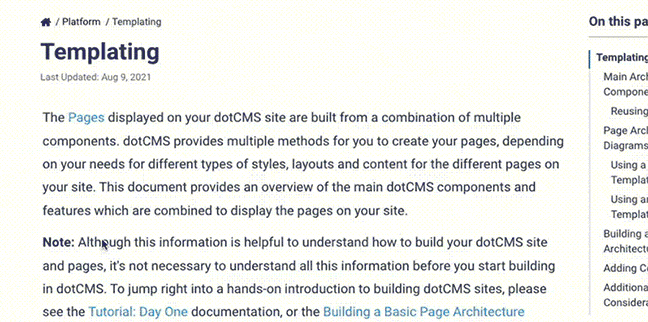You can install and run dotCMS on Amazon EC2 virtual server hosting, for both development and production. dotCMS is tested on Amazon EC2 servers, and a number of production dotCMS systems are implemented via Amazon EC2. When running dotCMS on Amazon EC2, dotCMS also supports the use of Amazon Elasticache for improved cache performance.
The topics above are step-by-step guides for getting dotCMS running on Amazon's EC2. Note that these are intended for demonstration and testing purposes only, and additional configuration is recommended before using Amazon EC2 for Production environments.


